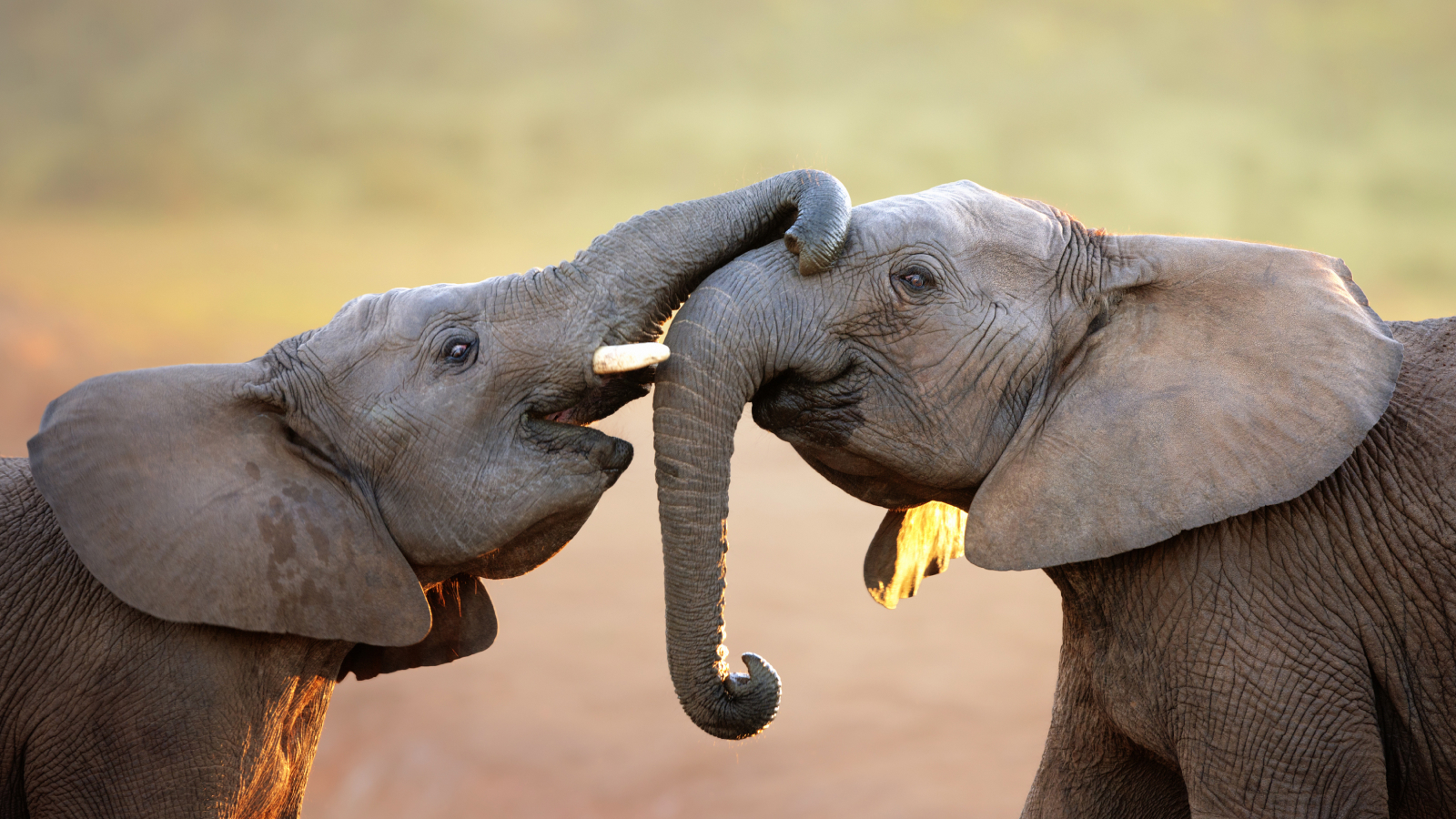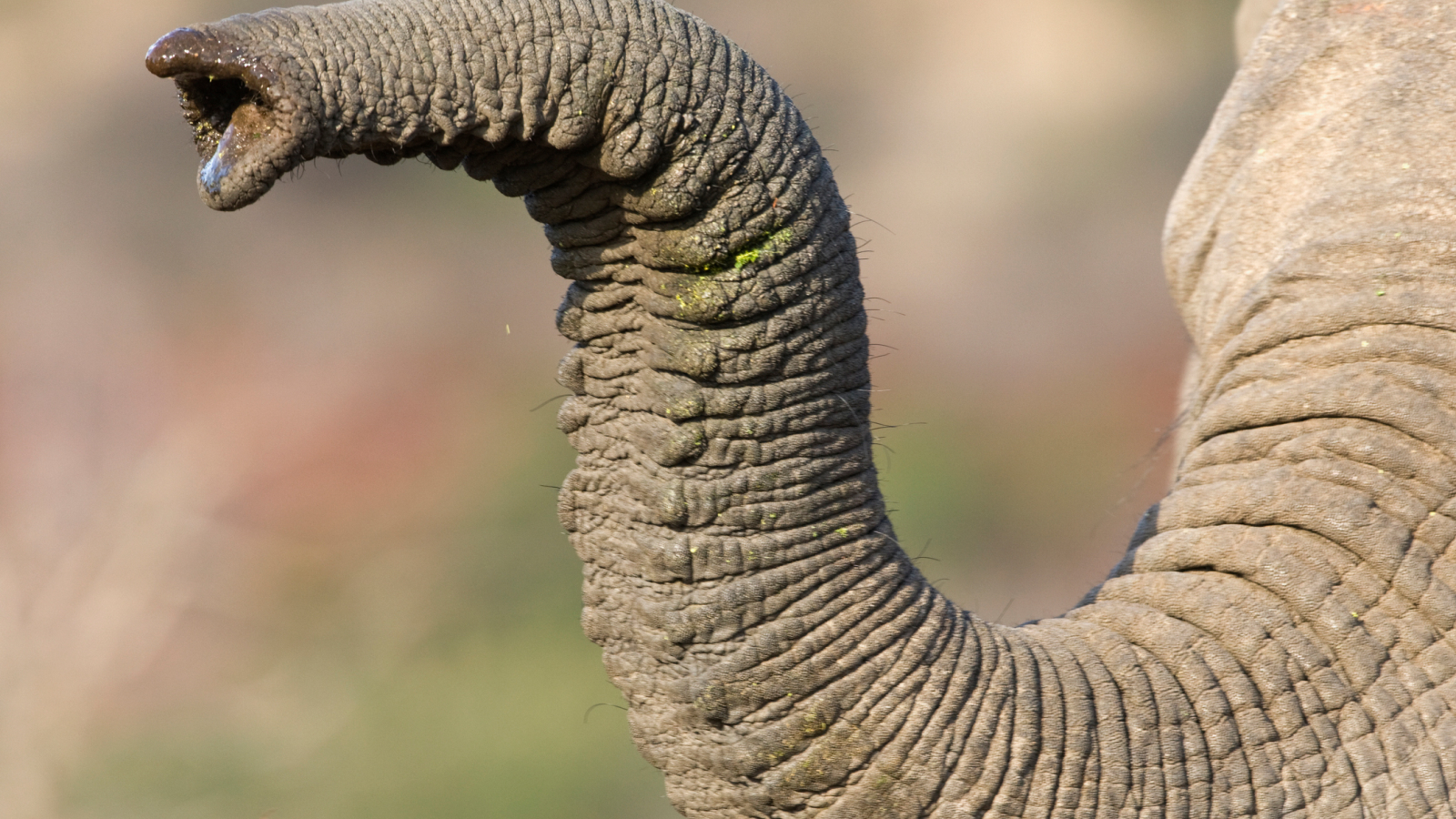Scientists may have finally figured out how elephants got their incredible trunks
Elephants appear to have evolved their long, grasping trunks as a result of climate change pressures on their ancestors millions of years ago.

Elephants have astonishing trunks that are strong, dexterous and flexible. Now, scientists may have finally worked out how Earth's largest living land animals evolved their charismatic proboscises.
Elephant trunks are marvels of evolutionary biology. They can be more than 6.5 feet (2 meters) long and have more than 40,000 individual muscles and nerve fibers. They are capable of lifting over 600 pounds (270 kilograms) but can carefully pick up a single peanut.
The exact environmental and biological pressures that led to the evolution of these trunks have long puzzled scientists, but a new preprint study, published Nov. 28 in the journal eLife reveals that climate-driven changes may explain part of the mystery.
Related: Elephants' giant, hot testicles could stop them getting cancer
Understanding the evolution of elephant trunks has always been challenging because the soft tissues of the trunk, like muscles and skin, do not fossilize well. This makes it difficult for scientists to find direct evidence of early forms of the trunk in fossil records.
Many long-trunked animals have long lower jaws, the scientists explained. But these long mandibles subsequently shorten after co-evolving with a trunk — though the link between the two is somewhat unclear.

In the new study, researchers compared three major families of elephant-like mammals in northern China that existed around 11 to 20 million years ago, investigating how the physiology of these groups differed depending on their feeding strategies and ecosystems.
Get the world’s most fascinating discoveries delivered straight to your inbox.
The groups included Amebelodontidae, Choerolophodontidae and Gomphotheriidae — three distinct lineages of gomphotheres, the ancestral group of living elephants.
The lead author of the study Chunxiao Li, a researcher at the University of Chinese Academy of Sciences, told Live Science that these ancient mammals were of particular interest because they all had long but "differentiated" mandibles, so could infer how it impacted trunk evolution.
Related: Watch an elephant peel a banana with her trunk in incredible first–of-its-kind footage
The team analyzed the tooth enamel of these three types of early elephant to glean new clues about their feeding habits and the environments they lived in.
They found that Choerolphontidae seemed to live in relatively closed environments like forests, while Amebelodontidae expanded into more open habitats, such as grasslands. Gomphotheriida appeared to have lived in habitats that were somewhere in between.
The scientists combined these findings with mathematical simulations of the jaw motion of these three extinct species.
"Cherolophodon live in dense forests, so there are many plants that have horizontally extending branches," study co-author Shi-Qi Wang, professor at the Key Laboratory of Vertebrate Evolution and Human Origins at the Chinese Academy of Sciences told Live Science.
Their jaws were suited to exerting pressure in up and down directions, rather than forwards or backwards, efficiently cutting through horizontal foliage. The researchers suggested their trunks were relatively primitive and clumsy.
However, the jaws of both Gomphotheriida and Amebelodontidae, which lived in more open habitats, were more adapted to cutting vertically growing plants like soft-stemmed herbs and grasses. The nasal area of their skulls seemed to more closely resemble modern elephants, suggesting their trunks were capable of coiling or grasping actions that could help bring food directly to their mouths.
"We know that the whole paleo-environment changed [during this time] from warm and humid to colder, drier and open environments," Li said. "At that time, we see that these [early elephants] start using their long trunks to grab grasses."
This open-land grazing may have promoted the evolution of the trunks we see today, she said. It also provides clues as to why forest-dwelling animals like tapirs have trunks that are relatively feeble compared with elephants' trunks.
"We found why [early elephants] started to have such smart trunks… their trunks become stronger and more flexible, until finally, they start losing their long mandibles," Wang said.

Jacklin Kwan is a freelance journalist based in the United Kingdom who primarily covers science and technology stories. She graduated with a master's degree in physics from the University of Manchester, and received a Gold-Standard NCTJ diploma in Multimedia Journalism in 2021. Jacklin has written for Wired UK, Current Affairs and Science for the People.
 Live Science Plus
Live Science Plus





